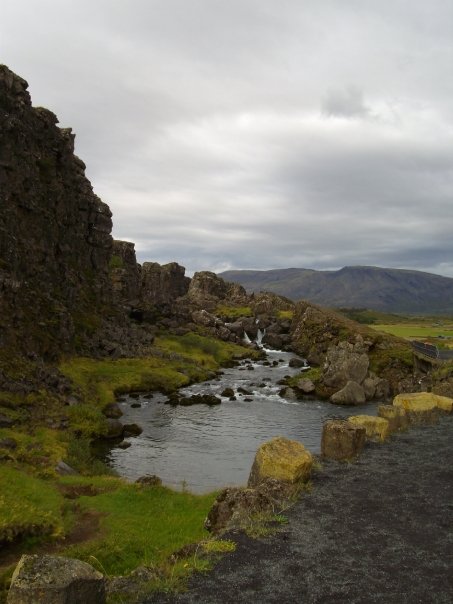
September 24, 2013, by Christina Lee
The Far Traveller
I have just come back from a range of different research trips which took me to Shetland, Iceland, Germany and Ireland in a very brief time span. While I have really enjoyed the opportunities to talk with my colleagues, I am less keen on the travel itself, especially since flying is not very comfortable, airports can be noisy and crowded places and I am not one that can easily work with a lot of background noise. So there was only one thing to do: to let my mind wander to the other travellers, the ones who endured much bigger hardships than eating yet another tepid Panini or having someone take up all the arm rest. One of the most remarkable women of medieval fiction is Guðrið who is mentioned in two of the so-called ‘Vinland sagas’: Grænlendinga saga, the Saga of the Greenlanders, and Eiríks Saga Rauða, the saga of Erik the Red. The Sagas of Icelanders are however not entirely fictional, they are more like historical fiction and they are based on the memory of past events and people that was still prevalent when the sagas were composed (in this case the 14th century). While we should assume that while not every line associated with Guðrið in the sagas is ‘true’, her story and that of her voyages will have taken place.
Guðrið was born in Iceland, in Laugrabrekka on the Snæfellsness peninsula in the late tenth century. According to Eiríks Saga Rauða she was the daughter of þorbjörn, a man so generous that he ruined himself through feasting and gift-giving and who subsequently takes up an offer to move to Greenland with Erik – a man who perhaps is the first saga character to consider a marketing ploy: by naming the newly discovered land ‘Greenland’ he hopes to entice people who are fed up with ‘Iceland’. So Guðrið joins her father and his followers to Greenland. Here she is a witness or participant in a ceremony that is still much discussed, the ceremony of a prophetess who tries to put an end to famine and disease. Religion features large in Guðrið’s life – she is said to be a Christian, although she is familiar with pagan rites which she learned from her foster-mother.
Guðrið is married, and soon widowed through an epidemic. This terrible event is perhaps one of the best examples for the laconic saga style. When her husband dies Guðrið is with him at the home of a friendly farmer and his wife Sigrid. One evening the two women go to the privy together (plu ça change?) and Sigrid refuses to come back out since she can see herself and Guðrið’s husband in the group of the dead lined up outside the door. Sigrid subsequently dies and becomes a problem since her corpse tries to climb back into bed with her husband. The solution is, of course, an axe placed into the dead woman’s breast.
In any case, the widow Guðrið is married to a new husband some time later, Kalrsefni, who decides to join an expedition to the newly discovered lands out west (which are now supposed to be the coast of Canada), where she and the others meet with the indigenous population. Unfortunately greed puts a grisly end to the expedition and Guðrið once again moves back to Greenland and then to Iceland. After her husband dies she lets her son, who was actually born in the New World, take over the farm and goes on a pilgrimage to Rome. She returns and becomes an anchoress for the rest of her life back in Iceland. Guðrið’s life spans much of the known world of medieval Icelanders and her travels – in open boats, exposed day and night to the sea and surf and with very little privacy – take her across thousands of miles. Just like myself, trying to find a little space in a tiny capsule, she would have tried to use whatever room was possible for her to sleep – only that her journeys took days, not hours. Her life shows just how exciting the life of a Viking woman could have been and how far they could travel in a period in which the world is often assumed to have shrunk to the local backyard.
For anyone interested in the sagas, the is a Penguin translation: The Vinland Sagas, ed. & trans by Magnus Magnusson and Hermann Pálsson. There is also a really lovely retelling of Guðrið’s story in Margaret Elphinstone’s The Sea Road.
No comments yet, fill out a comment to be the first

Leave a Reply